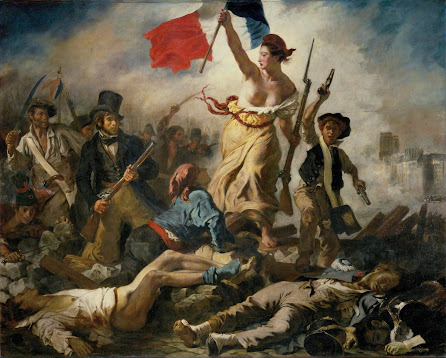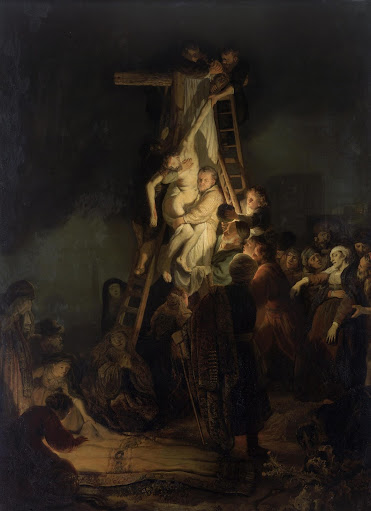Classical Revolt
The 18th century to mid 19th century was a political firestorm worldwide. Also called the "Age of Revolutions", in just around 150 years we got Circassian, Industrial, American, French, Haitian, and Serbian Revolutions, just to name a few. Revolutions are many things, but one thing they are most certainly not is clean. Social and political upheavals are messy and brutal, especially during this time period. American soldiers fighting and dying for freedom en masse, and only a few years later the French aristocracy starts coming in 1st place at the Headless Horseman look-alike contest thanks to Joseph-Ignace Guillotin's most famous invention. This was a gritty and savage period in history, which is why it's very interesting to me that dozens of artists depicted moments from this period through a brighter, more glorious lens.
 |
| Eugene Delacroix, Liberty Leading the People, 1830, Oil on Canvas |
A fantastic example of this is Liberty Leading the People by Eugene Delacroix, painted in late 1830 in France. It was painted as a commemoration of the July Revolution of 1830, which dethroned Charles X of France. The painting beautifully depicts the masses revolting against the monarchy, a massive crowd of citizens marching over the bodies of French soldiers from the era, led by the female embodiment of Liberty, proudly waving the French flag in one hand and brandishing a musket in the other. The piece has definite elements of violence and gruesomeness in it (See above: the young boy dual-wielding flintlock pistols), but based on the artist's choice in framing and palette of bright, vibrant colors, it is not a condemnation of this violence. It's a celebration of the triumph of the average citizen over the aristocracy.
 |
| John Trumbull, The Death of General Montgomery in the Attack on Quebec, December 31, 1775, 1786, Oil on Canvas |
 |
| Emanuel Leutze, Washington Crossing the Delaware, 1851, Oil on Canvas |
And finally, possibly the most well-known revolutionary painting, Emanuel Leutze's Washington Crossing the Delaware. It's a very good painting, but it sacrificed historical accuracy for glorious reverence to George Washington. The actual crossing of the Delaware River was said to be a miserable experience. It was New England in December at night and the weather was abysmal, soldiers huddled together for warmth in cramped rowboats, pushing through floating blocks of ice with not a lot of room for Washington to strike a Captain Morgan pose.


This was a great post! I really liked how you broke down each of your example paintings, describing in detail their historical context, as well as their artistic elements that reflect (and are influenced by) the moments of the vast amount of revolutions that occurred during this period. It's so interesting to see how although each painting depicts a scene from a different revolution, and how each one does not illustrate the same emotional atmosphere. For example, while Delacroix's work paints a celebration of triumphant, Trumbull's, provides a tragic moment, and Leutze's lacks historical accuracy by covering it with something hopeful. (Just as I learned from your blog!). I find Revolution paintings interesting because artists can either capture a scene either tragically or more hopefully, regardless of how the moment actually occurred.
ReplyDeleteI decided to do revolution art as well. I really like how you explain about Washington Crossing the Delaware how it was miserable for men. For me, I can see that there is a hope and strength in that artwork. George Washington standing up and that represent of strength to me.
ReplyDelete